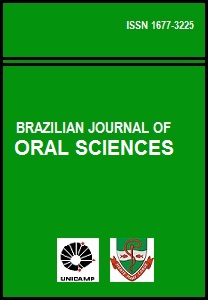Abstract
Craniofacial osseointegrated implants enabled producing implant-retained facial prosthesis, namely the orbital prosthesis. Aim: To evaluate the length and width of the bone structure of the peri-orbital region and to present the method validation. Methods: Computed tomography scans of 30 dry human skulls were obtained in order to register linear length and width measurements of the periorbital region. Two examiners made the measurements twice with intervals of at least 7 days between them. Data were analyzed by descriptive statistics and the paired Student’s t-test was used as inferential technique (SAS, α=0.05). Results: In most cases, the intra- and inter-examiner variations were not significant (p>0.05). Therefore, the method proposed was considered as precise and valid for the measurement of the peri-orbital region. The measured points correspond to the hours of a clock. The major lengths were observed at 1 h (18.32 mm) for the left peri-orbital bone and at 11h (19.28 mm) for the right peri-orbital bone, followed by the points situated at 2h (13.05 mm) and 12h (11.37 mm) for the left side and at 10 h (12.34 mm) and 12 h (11.56 mm) for the right side. It was verified that the three points with lowest values followed the same anatomical sequence in the supraorbital rim for the right and left orbits, showing compatibility with the insertion of the intraoral osseointegrated implants. The medial wall of both orbits did not present sufficient length to allow the insertion of intraoral or craniofacial implants. Conclusions: The largest width points were observed in the supraorbital rim and in the infralateral region of both orbits and those of smallest width were found in the supralateral region of both orbits.The Brazilian Journal of Oral Sciences uses the Creative Commons license (CC), thus preserving the integrity of the articles in an open access environment.
Downloads
Download data is not yet available.

